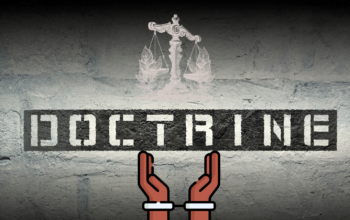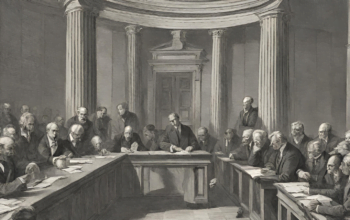Legal Literacy – This article discusses the theory of state Administrative Law. The field of state administration can be viewed through the development of these theories as follows:
State Administrative Law Theory: Ekapraja (Ekatantra) Theory
In the 14th and 15th centuries, the general system of governance, especially in Europe, was absolute monarchy, where all state power was in the hands of the king. In such absolute monarchies, administration as state administrative law involved the creation of regulations (legislative), their execution (executive), and the maintenance of state administrative law in terms of supervision (judicial), all concentrated in the hands of the king, for his interests. The system of state administrative law was characterized by centralization and concentration. In this concentrated system, other state apparatus were merely assistants to the king and thus could not take initiatives on their own in performing their functions.
Thus, there was only one type of power, that of the king, hence the government of state administrative law is often referred to as Eka Praja government. In such states, the king could act arbitrarily, which resulted in the suppression and limitation of the freedom and independence of the citizens. The rights and freedom of the citizens were not recognized at all.
The arbitrary actions of the king led to the emergence of thinkers and scholars on state and law who wanted to break down the system of absolute monarchic state administrative law and sought a system that recognized and guaranteed individual rights and was protected by law.
State Administrative Law Theory: Dwipraja (Dichotomy/Dwitantra) Theory
An Austrian-German scholar, Kelsen, with his Die Reine Rechts Theorie, introduced a new school of law, the Vienna School, which divided all state power into two areas:
- Legis Latio, which includes the “law creating function”;
- Legis Executio, which includes:
- Legislative power;
- Judicial power.
The task of Legis Executio is broad, encompassing the execution of the constitution and all laws established by the legislative power, including administrative and all judicial powers. Kelsen then divided the administrative power into two areas:
- Political function (referred to as government);
- Administrative function (in German “verwaltung“, and in Dutch “bestuur”).
This division into two areas is also called dwipraja or dwitantra. Nawiasky in his book “Alge-meine Staatslehre” divided all state administrative law activities into two parts.
- Normgebung, which involves the creation of legal norms and their enactment, freely choosing its objects as needed.
- Normvolisichung or executive function, which is bound by norms or laws that must be implemented.
Nawiasky divided normvolisichung into two parts:
- Hu Verwaltung or state administrative law government (pangreh);
- Rechtsplege or judiciary.
According to A.M. Donner, the distinction of state administrative law powers can be seen from the nature of the functions in a state, which can be divided into two groups:
- Powers that define the tasks (taakstelling) of government tools or powers that determine state politics;
- Powers that carry out the tasks determined or realize the previously determined state politics.
Frank J. Goodnow divided all state administrative law powers into a dichotomy:
- Policy making, which determines tasks and directions;
- Task executing, which carries out the tasks and directions of the state.
The theory that divides the functions of state administrative law into two functions is called the Dwipraja Theory.
State Administrative Law Theory: Tripraja (Trias Politica) Theory
In the 17th century, John Locke in his book “Two Treatises on Civil Government” outlined the distribution of power (machten scheiding) stating that state power should be divided into three powers:
- Legislative power, which involves the creation of laws.
- Executive power, which involves the execution of laws, including the supervisory power over the enforcement of laws, i.e., judicial power.
- Federative power, which involves powers not included in the other two (legislative and executive), such as the power to manage relations between state tools, both internally and externally.
Each power must be delegated to a separate and independent state apparatus. With this division of power, the arbitrary power of the king could be avoided, thereby limiting the king’s power.
In the 17th century, Montesquieu’s doctrine or theory emerged, refining the theory or doctrine of John Locke. Montesquieu in his book “L’Esprit des Lois” proposed his theory that to overcome the absolute authority of the king, a separation of state administrative law powers (functions) into three distinct powers, each with its own field of work and separated from one another, should be established in a state.
The three powers are:
- La puissance legislative (legislative power), carried out by the parliament;
- La puissance executive (executive power), carried out by the king;
- La puissance de juger (judicial power), carried out by the courts to uphold state administrative law regarding legislation.
This division of powers is known as Trias Politika. The system of state administrative law that divides the powers in a state into three types as mentioned is more widely known as the tripraja system.
State Administrative Law Theory: Catur Praja Theory
Van Volenhoven in his book “Omtrek Van Het Administraticf Recht” in 1926 outlined a residual or subtractive theory that divides the powers/functions of the government into four, as follows:
a. Function Bestuur
In a modern state, the function of bestuur (governing) has a very broad task, not only limited to the enforcement of laws as suggested by Montesquieu’s triaspolitika theory, but also includes the management of matters not included in maintaining state administrative law regarding legal order preventively (preventive rechtszorg), adjudicating/resolving disputes in state administrative law or making regulations. As modern state law increasingly intervenes in the affairs of society, whether in economic, social, cultural, or political fields, the function of bestuur becomes increasingly extensive.
b. Function Politie
The function of politie is to carry out preventive supervision (preventief rechszorg), forcing residents of an area to obey the law and maintaining order beforehand (preventive actions), so that public order in that society remains maintained.
Donner stated that the function of police is actually included in the concept of the function of bestuur (governing) because the enforcement of a law is meaningless if it does not include the power to carry out preventive actions. Therefore, the functions/powers of bestuur and police cannot be separated from each other.
c. Function Justitiel (Adjudicating)
The function or power of the judiciary is also a repressive supervisory function. This means the function of carrying out concrete actions, so that disputes in state administrative law can be resolved based on legal regulations as fairly as possible. The judiciary can be divided into two types:
- Contentenze jurisdictie, where the judge solely carries out the function/power of the judiciary (rechterlijke functie);
- Voluntaire juridictie, where the judge not only carries out the function/power of the judiciary but also performs regulatory tasks, government tasks, and police tasks. In this case, the function of the judiciary in state administrative law is referred to as voluntaire juridictie.
d. Function Regeiaar (Regulating)
The function of regulating is a legislative task to obtain/achieve all legislative results in a material sense. Thus, the result of the regulating function is not law in the formal sense (i.e., made by the president with the approval of the DPR), but law in the material sense, i.e., every regulation and decree made by the government is binding on all or part of the population of a state.
State Administrative Law Theory: Panca Praja Theory
In 1951, the Panca Praja theory was developed by J.R. Stellinga in his book “Grondtreken Van Het Nederlands Administratie gerecht”. J.R. Stellinga added another function to the state administrative law government, so the functions of the state administrative law government no longer consisted of four functions, but five, as follows:
- Function wetgeving (legislation);
- Function bestuur (state administrative law government);
- Function politie (police);
- Function rechtspraak (judiciary);
- Function burgers (citizenship).
The Panca Praja theory was also proposed by Lemaire, which essentially refined the Catur Praja theory from Van Vollenhoven. According to Lemaire’s Panca Praja theory, the functions of state administrative law government consist of five functions, as follows.
Function bestuurszorg includes the management of public welfare (with certain characteristics), giving trust to state administration to act freely, referred to as Frcise Ermessen, i.e., managing quickly and clearly which provides usefulness (oeltreffend) for the interests of public welfare.
The function of state administrative law bestuur is a function to implement legislation only, as stated by the doctrine/theory of Trias Politika/Tri Praja.
W.F. Willoughby in his book “The Goverrment of Modern States” stated that the powers in a state consist of legislative, executive, judicial, and administrative. However, because of the presence of the electorate (all citizens have the right to vote) in a state, there are five functions/powers.
- Function politie (police power).
- Function justitiel (judicial power).
- Function Regeiaar (regulatory power).
State Administrative Law Theory: Sad Praja Theory
The Sad Praja theory presented by Wirjono Prodjodikoro is based on the 1945 Constitution. In this theory, the powers of state administrative law government no longer consist of five, but six powers, namely:
- Function/power of government;
- Function/power of legislation;
- Function/power of the judiciary;
- Function/power of finance;
- Function/power of foreign relations;
- Function/power to uphold state administrative law and public security.
In relation to the scope of tasks of state administrative law government, it is constitutionally and philosophically stated that Indonesia adopts the principle of a dynamic rule of law or welfare state (negara kesejahteraan) because the state is obliged to guarantee social welfare (society). This statement has five bases from the Preamble of the 1945 Constitution in paragraph IV, which includes four types of state objectives, namely protecting the entire nation and all the blood spilled in Indonesia, enlightening the life of the nation, protecting the public welfare to participate in maintaining world order, based on independence, eternal peace, and social justice.
The fifth principle of Pancasila, also contained in paragraph IV of the Preamble of the 1945 Constitution, affirms the principle of “Social justice for all the people of Indonesia.” Also, the provisions of Article 33 and Article 34 of the 1945 Constitution require the government to ensure the highest prosperity of the people and to care for the poor and neglected children so that the earth, water, and natural resources contained therein, as well as those needed for the livelihood of many people, are controlled by the state to be used by the government in carrying out the task of building social welfare.






